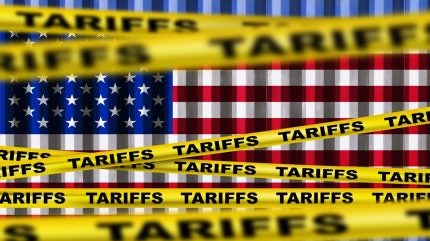
The latest Global Port Tracker report indicates a significant decrease in import cargo at major US container ports starting from next month due to the rising tariffs on all US trading partners.
NRF supply chain and customs policy vice president Jonathan Gold said: “Retailers have been bringing merchandise into the country for months in attempts to mitigate against rising tariffs, but that opportunity has come to an end with the imposition of the ‘reciprocal’ tariffs.
“Tariffs are taxes on US importers ultimately paid by consumers. They are creating anxiety and uncertainty for American businesses and families alike with the speed at which they are being implemented and stacked upon each other. At this point, retailers are expected to pull back and rely on built-up inventories, at least long enough to see what will happen next.”
Last week, Trump introduced a minimum 10% tariff on all US trading partners and “reciprocal” tariffs up to 50% on various countries.
This comes after the president launched tariffs on China, Canada and Mexico earlier this year.
Following this, China imposed tariffs on US goods. In response, Trump increased tariffs on China, resulting in a base rate of 104% solely for national emergency tariffs. When combined with the base tariff rate and previous Section 301 tariffs, the rates are even higher.
Hackett Associates founder Ben Hackett expects total cargo volume for 2025 to experience a net decrease of 15% or more, even when considering higher levels from earlier in the year.
“In this environment of complete uncertainty, our forecast for import cargo will be subject to significant adjustments over the coming months. At present, we expect to see imports begin to decline by May and that they will drop dramatically during the remainder of the year,” Hackett stated.
Previously, import volumes had been on an upward trend since last summer as retailers rushed to stockpile goods ahead of an anticipated strike at ports along the East Coast and Gulf Coast scheduled for October and then continued to do so expecting an intensification of tariff impositions post-November elections.
The total throughput for imports during 2024 reached 25.5 million twenty-foot equivalent units (TEU), marking a surge of 14.7% from the previous year and standing out as one of the highest figures recorded since the peak seen during 2021’s pandemic-driven high of 25.8 million TEU.
In February of this year, US ports monitored by Global Port Tracker processed 2.06 million TEU, with data from the Ports of New York and New Jersey still pending.
Despite being 7.5% lower than January’s figures, this represented a 5.2% increase from the previous year and marked the busiest February in three years. This is notable as February is typically slow due to factory shutdowns in China for Lunar New Year.
While March figures are not yet reported, projections for the month are at 2.14 million TEU, an increase of 11.1% from last year.
April’s forecast includes cargo shipped before new tariff announcements and is expected at 2.08 million TEU, up 3.1%.
However, May is predicted to break a streak of growth with a steep decline to 1.66 million TEU, a drop of 20.5%. Subsequent months also show significant decreases.
Latest data from the US Office of Textiles and Apparel revealed that February apparel and textile imports rapidly slowed as worries around US tariffs and a trade war started to sink in for fashion brands and retailers.



